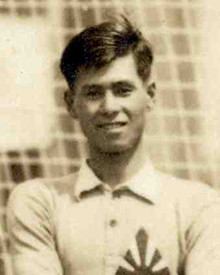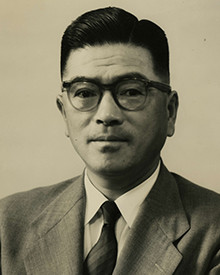Japan Football Hall of Fame
JFA Hall of Fame Inductee
MATSUMARU Teiichi
Special Selection: 12 th Japan Football Hall of Fame Inductee in 2015

- Born in Tokyo on 28 February 1909
MATSUMARU Teiichi started to play football at Furitsu Daigo Junior High School (currently known as Koishikawa Secondary Education School). In 1926, he went on to Keio University and became a captain in 1931. After graduated, he became an assistant coach and later became a head coach in 1937.
In between 1930s and 1940s, he tried to strengthen the team by the German methods. He broke new ground for Japanese football by developing the strongest team which defeated dominant champions such as Tokyo Imperial University and Waseda University. As a symbolic coach of the era, he contributed to improve the level of Japanese football by introducing a new perspectives and different style of football.
The Keio University Soccer Team followed the footstep of HAMADA Yukichi, the first captain who led the team in studying “Fussball” written by Otto NERZ, the first coach of the German national team, and assimilated those techniques, tactics and theories to their football. Matsumaru who was influenced by Hamada continued to follow this theory by practicing the counter-attacks with direct passes, effective movements without the ball and quick transitions in attack and defense.
In his first year as the head coach of Keio University in 1932, his football team became the champion of one of the top-level inter-collegiate leagues, the Tokyo College Football League, re-named as the Kanto University League from 1935, for the first time and won the first nationwide title of the All Japan University Championship as the Keio Club which included the former graduates as players. Some of his remarkable achievements as the head coach include the winning the Kanto University League four times, The East-West University Championship three times and the All Japan University Championship three times including Keio BRB. He managed the golden period of Keio University and nurtured star national team players like UKON Tokutaro and NINOMIYA Hirokazu.
As a member of the Japan National Team, he participated in the 10th Far Eastern Championship Games in Manila in 1934.
He also contributed to the development of referees after the war as the first Chairman of the Referee’s Committee. He organised a registration system for the referees and worked in raising the level of their techniques while playing an active role as an international referee himself.
He passed away in 1997.





